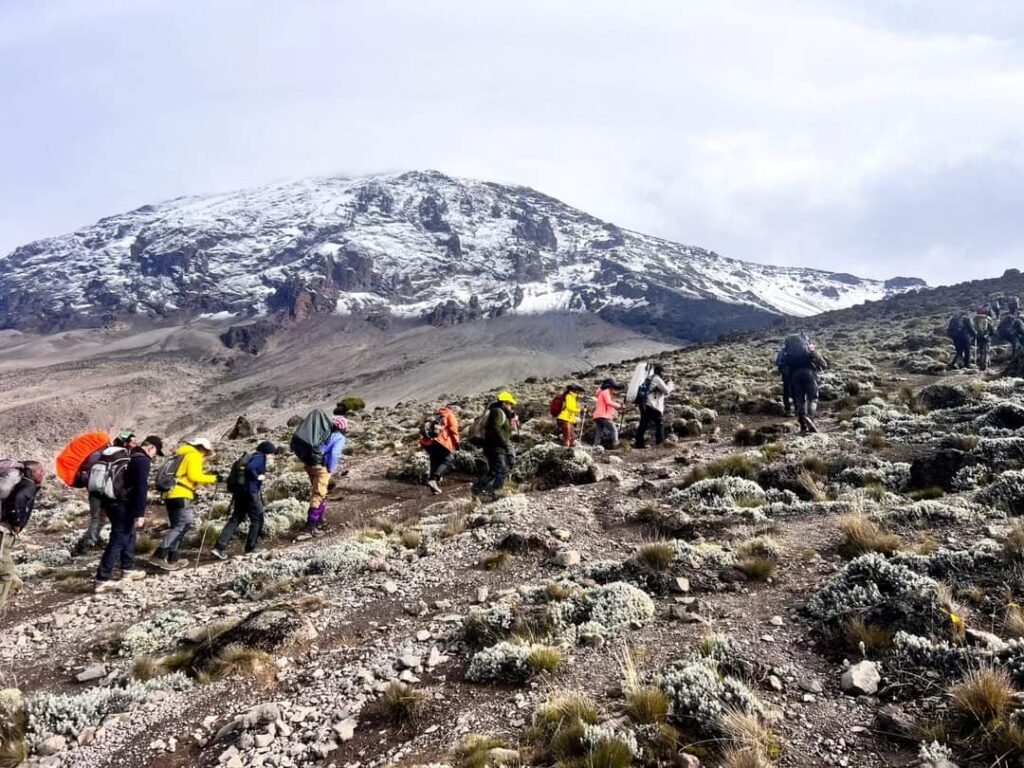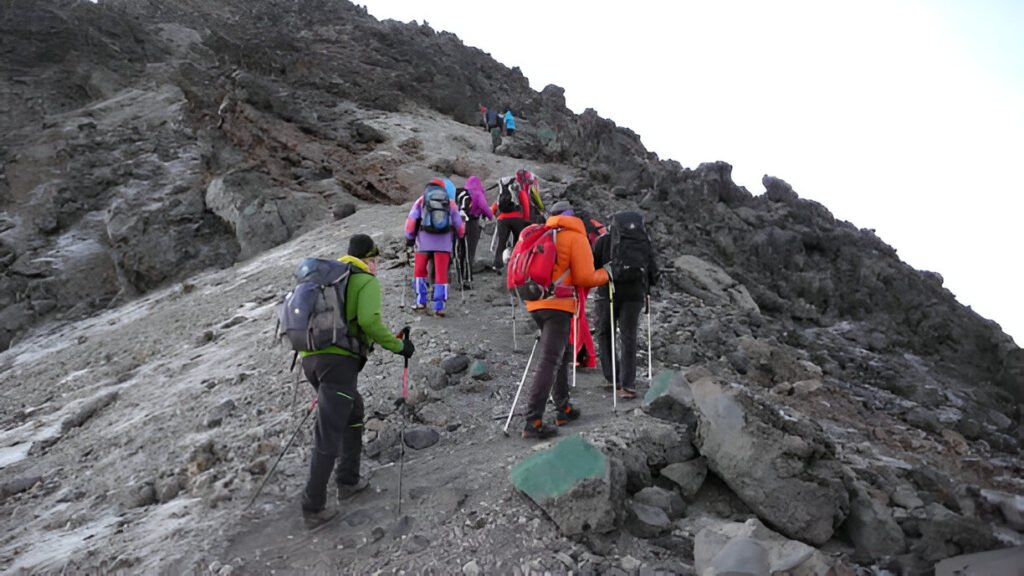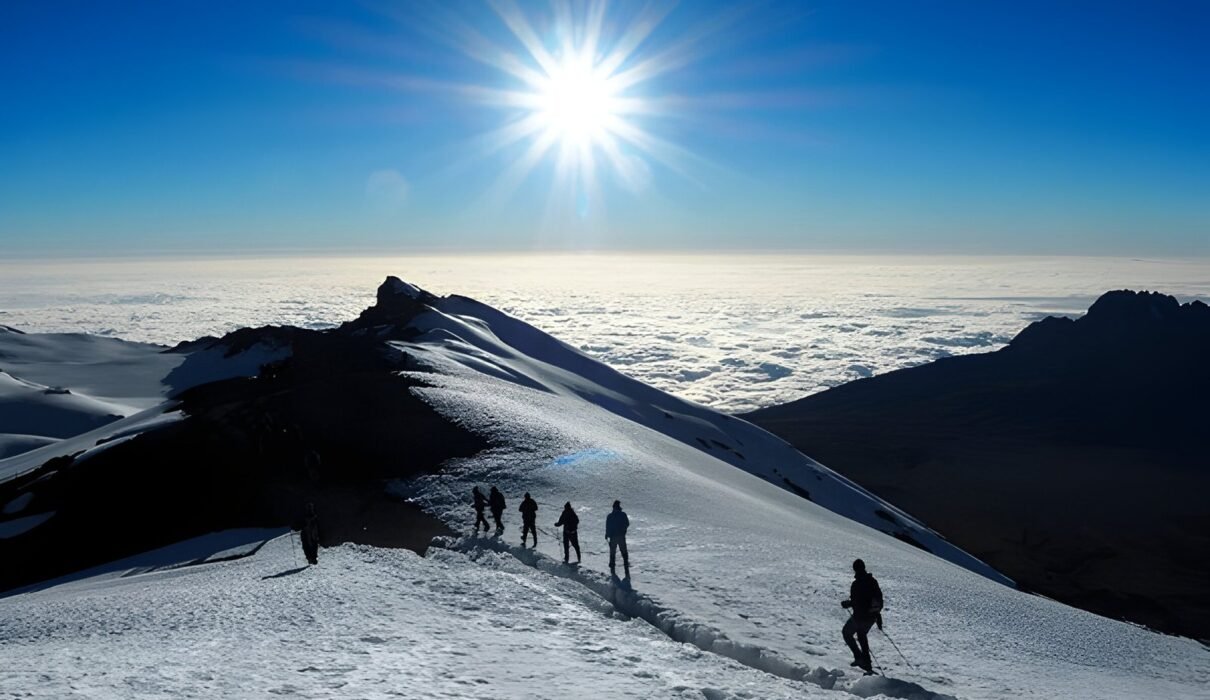Kilimanjaro Success Rate : Climbing Mount Kilimanjaro is a bucket-list adventure for many, but not everyone who attempts to reach the summit is successful. Kilimanjaro’s success rate varies depending on the route you choose, your level of preparation, and how well you acclimatize to the altitude. Understanding the factors that affect your chances of success is key to having a safe and rewarding climb.
In this guide, we’ll break down the Kilimanjaro success rates for different routes, and provide actionable tips to increase your chances of reaching Uhuru Peak.

Kilimanjaro Success Rate : Routes
The success rate of climbing Kilimanjaro depends largely on the route you choose. Kilimanjaro has several established routes, and they vary in terms of difficulty, acclimatization opportunities, and duration. Here’s a breakdown of success rates by route:
Marangu Route (5-6 Days)
The Marangu Route, often called the “Coca-Cola” Route, is the easiest in terms of terrain, but it has the lowest success rate (around 50%) because of its shorter acclimatization period.
Machame Route (6-7 Days)
The Machame Route, known as the “Whiskey” Route, is more challenging, with steeper paths, but it has a higher success rate (approximately 70%-80%) due to better acclimatization opportunities.
Lemosho Route (7-8 Days)
The Lemosho Route offers one of the highest success rates (up to 90%), thanks to its longer duration, which allows for gradual acclimatization.
Rongai Route (6-7 Days)
Coming from the north, the Rongai Route offers fewer crowds but a moderate success rate (65%-70%). It’s slightly easier than Machame but offers fewer acclimatization days.
Northern Circuit Route (8-9 Days)
The Northern Circuit is the longest route on Kilimanjaro and has the highest success rate (up to 95%), thanks to its slow and steady ascent, which gives trekkers ample time to acclimatize.
Learn more about Kilimanjaro routes and their success rates with Kilimanjaro Climb Specialist
Kilimanjaro Success Rate : How Acclimatization Affects
Altitude sickness is the main reason many climbers fail to reach the summit of Kilimanjaro. As you climb higher, the air becomes thinner, which makes it harder for your body to get enough oxygen. Acclimatization is the process of adjusting to high altitudes, and it plays a crucial role in determining your success.
Tips for Proper Acclimatization:
- Climb Slowly: A slow pace is essential to allow your body to adjust to the changing altitude. This is why routes like Lemosho and the Northern Circuit have higher success rates.
- Climb High, Sleep Low: This mountaineering principle involves ascending to a higher altitude during the day and then descending to sleep at a lower altitude. Many Kilimanjaro routes naturally incorporate this strategy.
- Stay Hydrated: Dehydration can worsen altitude sickness, so it’s important to drink 3-4 liters of water per day.
- Listen to Your Body: If you feel symptoms of altitude sickness, such as headaches, nausea, or dizziness, inform your guide and take it slow.
Learn more about acclimatization techniques for Kilimanjaro
Kilimanjaro Success Rate : Training and Fitness for Kilimanjaro
Although Kilimanjaro does not require technical climbing skills, it’s still a physically demanding trek. Being physically prepared increases your chances of success and makes the experience more enjoyable.
Training Tips for Kilimanjaro:
- Cardiovascular Endurance: Improve your stamina with aerobic exercises like hiking, running, cycling, or swimming. You’ll be trekking for 5-7 hours a day, so endurance is key.
- Strength Training: Build your leg and core strength with exercises like squats, lunges, and planks. This helps you handle steep climbs and carry a daypack.
- Hiking Practice: Do regular hikes with a backpack to get used to carrying weight and walking on uneven terrain. If possible, train at high altitudes to simulate the conditions on Kilimanjaro.
Get detailed Kilimanjaro training tips from Kilimanjaro Climb Specialist
Kilimanjaro Success Rate : Choosing the Right Kilimanjaro Guide
One of the most important factors in your Kilimanjaro success is the tour operator and guide you choose. Experienced guides not only know the routes but can also help you manage altitude sickness, motivate you during tough stretches, and ensure your safety.
Qualities of a Good Kilimanjaro Guide:
- Knowledge of the Mountain: Your guide should have in-depth knowledge of the mountain, including the weather patterns, terrain, and altitude sickness management.
- Supportive Team: A good guide is supported by a strong team of porters and cooks who make sure everything runs smoothly, from setting up camps to preparing meals.
- First Aid Training: Ensure your guide is trained in first aid and has experience dealing with altitude sickness. Your safety is paramount.
Find experienced Kilimanjaro guides with Kilimanjaro Climb Specialist
Kilimanjaro Success Rate : Packing the Right Gear for Success
Packing the right gear can significantly impact your chances of success. The weather on Kilimanjaro can change rapidly, with temperatures ranging from warm and tropical at the base to freezing near the summit.
Essential Kilimanjaro Gear:
- Layered Clothing: Use a layering system with moisture-wicking base layers, insulating mid-layers, and waterproof outer layers.
- Good Hiking Boots: Sturdy, waterproof hiking boots with good ankle support are essential. Make sure they’re broken in before your trek.
- Four-Season Sleeping Bag: Kilimanjaro nights can be extremely cold, especially near the summit. Bring a sleeping bag rated for sub-zero temperatures.
- Daypack: A lightweight, comfortable daypack with a hydration system will help you stay hydrated and carry your essentials.
Check out a comprehensive Kilimanjaro packing list here
Kilimanjaro Success Rate : Summit Night: The Final Push
The final ascent to the summit, often called summit night, is the most challenging part of the Kilimanjaro trek. You’ll start the climb around midnight, aiming to reach the summit at sunrise. The combination of freezing temperatures, exhaustion, and altitude makes this part of the climb particularly difficult.
Tips for Summit Night:
- Take It Slow: Summit night requires a slow, steady pace. Rushing will increase your chances of altitude sickness and exhaustion.
- Stay Positive: Mental strength is just as important as physical stamina. Keep a positive attitude and focus on taking one step at a time.
- Stay Warm: Wear all your layers to protect yourself from the freezing temperatures. Make sure your hands and feet are well insulated.
Get expert advice for summit night from Kilimanjaro Climb Specialist
Kilimanjaro Success Rate : The Role of Mental Preparation
Mental toughness is a critical factor in your Kilimanjaro success. Even the fittest climbers can struggle with the mental challenge of trekking at high altitudes, particularly on summit night when exhaustion sets in.
Mental Preparation Tips:
- Set Small Goals: Focus on reaching the next milestone rather than thinking about the entire climb. Breaking the trek into manageable sections helps maintain motivation.
- Visualize Success: Imagine yourself standing at the summit. Visualizing success can boost your morale when the climb gets tough.
- Stay Positive: Surround yourself with supportive fellow climbers and keep a positive mindset, especially during difficult sections.
Learn how to mentally prepare for Kilimanjaro with Eddy Tours Safaris
Kilimanjaro Success Rate : Travel Insurance for Kilimanjaro
Travel insurance is a must for Kilimanjaro, as it covers unexpected events like altitude sickness, injuries, and emergency evacuations. Without proper insurance, an emergency evacuation can be extremely costly.
What to Look for in a Travel Insurance Policy:
- Altitude Coverage: Make sure your policy covers trekking up to 6,000 meters.
- Medical Evacuation: Kilimanjaro’s high altitudes mean that emergency evacuation by helicopter may be required in serious cases.
- Trip Cancellation: Protect your investment with coverage in case you need to cancel due to illness or other unforeseen circumstances.
Get travel insurance for Kilimanjaro

Kilimanjaro Success Rate : FAQs
1. What is the overall success rate for climbing Kilimanjaro?
On average, the overall success rate for Kilimanjaro climbers is around 65%, but it varies depending on the route and acclimatization.
2. How can I increase my chances of reaching the summit?
Choose a longer route for better acclimatization, train properly, pack the right gear, and hire a reputable guide.
3. What is the best time of year to climb Kilimanjaro for success?
The dry seasons (June to October and January to March) offer the best weather conditions and higher success rates.
Start planning your Kilimanjaro climb with Kilimanjaro Climb Specialist
Kilimanjaro Success Rate : Conclusion
Reaching the summit of Mount Kilimanjaro is an incredible achievement, and with the right preparation, you can increase your chances of success. Choosing the right route, training well, acclimatizing properly, and packing the right gear are all essential steps to ensure you make it to the top. By following the tips in this guide, you’ll be well on your way to standing at the highest point in Africa.
Start your Kilimanjaro journey with Kilimanjaro Climb Specialist
Book your next adventure with Eddy Tours Safaris

